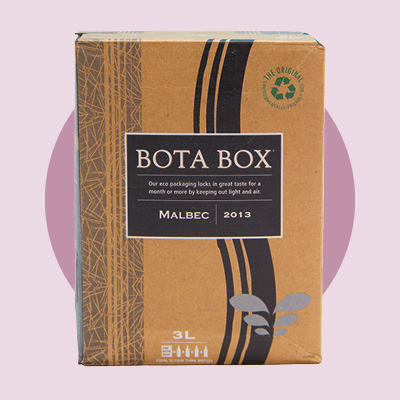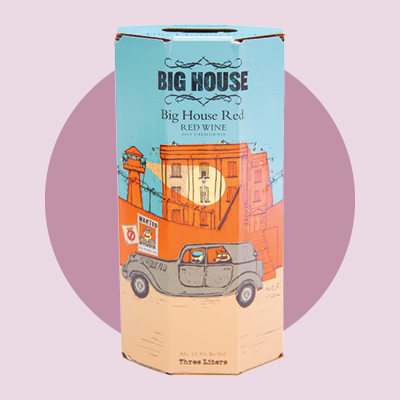Inside the box
A beginner’s guide to boxed wine
Boxed wine, the straight forty of the wine world, isn’t taken seriously by serious wine folks, and for obvious reasons. But one of the problems with wine is that it can get too serious. You realize this after you’ve lived in a wine town and taken your empty jug to the local co-op, where they fill it from a hose and charge you by the liter as if you were going to drive away in it.
If you drink wine every day, in moderation even, you need either money or priorities or both. The math: There are four bottles in a typical 3-liter box, which runs you about $20. Four bottle bottles, even in the adventurous aisles, add up to between $50 and $100. The difference is a wink if you’re used to cellaring Screaming Eagle. But if you like to drink wine every day and dwell in the shrinking middle class, then you sacrifice, or learn to box clever.
Other than price, the hallmark of the box is freshness. No matter how you stopper the thing, wine in a bottle begins to decline the moment you pop the cork or twist the cap. The genie is out of the bottle, and the time for making wishes is brief; a box is your buddy when you only want a glass. At my house, a box seldom lasts more than 10 days and, by then, it still tastes like new. (Bota Box claims to last a month after opening.)
Tip: Just when you think a box is drained, turn it on its end and let the wine flow away from the spout. Open the spout and blow into it until the bag balloons, then turn it upright, tilt the box and pour what will easily amount to a full glass. Oh, the half-eaten steaks I have salvaged by this method.
Those are the pluses. Here are some minuses: Some grapes simply defy being boxed, and Cabernet is one of them. A VinVault of this variety was proof; packaged in Modesto, on the wrong side of the tracks, it hints and misses at Cabernet Sauvignon’s big potential. Steer clear of boxed Pinot noir. The best California vintages of that grape begin in the $30s; boxed wine is just Texas in its rearview mirror. And be wary of a slick website, which doesn’t always mean snake oil but usually does.
Of course, as with music and apartments, it usually comes down to taste. Once you find a box you keep going back to, stick with it like a lover. Until then, happy hunting.
Wading the shelves of boxed wine is like scanning the one sale rack at Barney's. You'be been relegated, so get over it. That said, there are more and more selections than ever. You can even buy Spanish Grenache (Viña Borgia) and French Rhone (La Vielle Ferme) in a box. From France, versus Franzia.
Here are a few to get you started.

BOTA BOX
I’ve enjoyed all of the Bota Box reds, especially the Malbec and the Redvolution, which reminds me of the Languedoc blend my wife and I drank on sabbatical in the small town of Saint-Chinian, where the wine at the co-op ran humbly and abundantly for 75 cents a liter. Vin ordinaire they call it, to distinguish it from bottled vintages. One shouldn’t remind me of the other, because they blend completely different grapes. Blame it on the box.

FISHEYE SHIRAZ
We drank the FishEye Shiraz for a while and still do in a pinch. It’s got that big-fruit, food-friendly punch that makes wine drinkers salivate. It’s good with anything grilled—especially if you leave a few edges burned on whatever protein you’re firing up. But, as with Bota Box, all the varieties under one umbrella make me nervous, on the jack-of-all-trades-master-of-none theory. Boxed wine has its benefits, but finesse isn’t one of them.

BIG HOUSE RED
The Big House Red, once of the house of big-dog Bonny Doon, reaches a spicy-fruity complexity rare in boxes. This red blends a dozen or more grapes, and the label harvests more than 40 varieties. Achieving consistency from a blend of that many different grapes is akin to creating a World Series champ from a roster of overpaid prima donnas.

JACK TONE
The box we keep going back to. Don’t let the package fool you: It looks like the capstone project of a failing design student. But the wine is beyond drinkable. We had it with some crockpot spareribs recently, and the wine got legs and ran for several seconds all over the mouth. Jack Tone is typically a blend of Syrah and Petite Sirah (no relation; though, for those scoring at home, Syrah and Shiraz are the same).
For more from Mark, read his story on Mecca Coffee Company.


.jpg)
.jpg)
